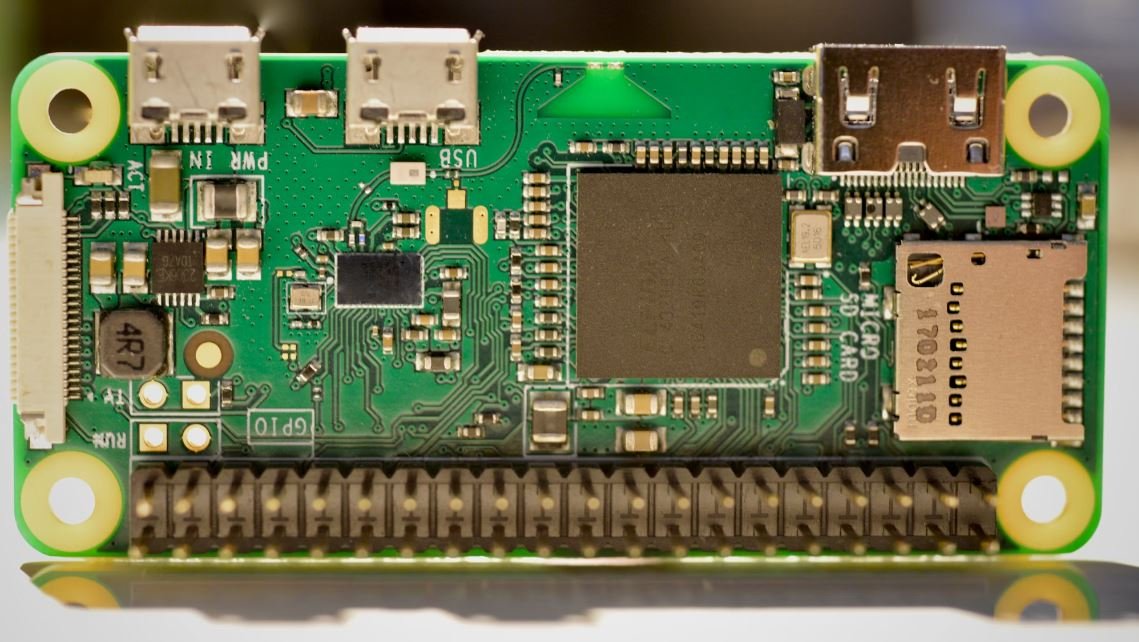How ChatGPT Works Technically for Beginners
ChatGPT, developed by OpenAI, is an advanced language model that uses deep learning techniques to generate contextually relevant responses to text prompts. Understanding how this impressive system works can help both beginners and experts appreciate its capabilities. In this article, we will explore the technical aspects of ChatGPT and shed light on its inner workings.
Key Takeaways
- ChatGPT uses deep learning techniques to generate human-like responses.
- It is trained on a vast amount of text data to understand language patterns and context.
- ChatGPT makes use of a large neural network architecture called Transformer.
- It employs a technique known as “fine-tuning” to make the model more specific to its intended use.
- ChatGPT has limitations and can sometimes produce incorrect or nonsensical responses.
Under the hood, ChatGPT utilizes a powerful neural network architecture called the Transformer. This network structure allows it to comprehend and generate language at a remarkable scale. With a combination of attention mechanisms and self-attention, the model can process an input sequence and generate an output sequence **with high accuracy**.
An interesting aspect of ChatGPT is that it undergoes a two-step training process: pre-training and fine-tuning. During the pre-training phase, the model learns from a diverse range of internet text to **capture a general understanding of language**. It predicts the next word in a sentence, using the context and occurrences of words it has seen before. However, this pre-trained model isn’t directly useful for generating responses.
Following pre-training, ChatGPT is fine-tuned on custom datasets that are generated with the help of human reviewers. These reviewers rate and provide feedback on model responses to a set of predefined prompts. The fine-tuning process helps the model **tailor its responses** to be more reliable, controlled, and safe for user interaction.
Transformer Architecture
The Transformer architecture plays a crucial role in ChatGPT’s ability to understand and generate coherent responses. It comprises multiple layers of self-attention mechanisms that enable the model to weigh the importance of different words in a given context. This self-attention allows the model to consider **relevant information** when generating a response and helps it maintain coherence over long conversations.
Each attention layer in ChatGPT has two sub-layers: multi-head attention and feed-forward neural networks. Multi-head attention allows the model to focus on different parts of the input sequence simultaneously, capturing various dependencies between words. Meanwhile, the feed-forward neural networks introduce non-linear transformations to the model’s outputs, **adding complexity and expressive power**.
| Feature | Value |
|---|---|
| Vocabulary Size | 60,000 |
| Maximum Token Limit | 4,096 |
With a vast vocabulary size of 60,000, ChatGPT can understand a wide range of words and phrases. However, due to computational limitations, there is a maximum token limit of 4,096 for both input and output. This limit means that if a conversation exceeds the token limit, it must be truncated or split into multiple parts to fit within the model’s constraints **while preserving coherence**.
Limitations and Considerations
Although ChatGPT is an amazing feat of deep learning, it still has several notable limitations. Here are some key points to keep in mind:
- ChatGPT can sometimes respond to a prompt with plausible-sounding but incorrect or nonsensical answers.
- It is sensitive to phrasing and wording in prompts, which can lead to different responses for slight variations in input.
- The model might not always ask clarification questions when faced with ambiguous queries, **leading to incomplete answers**.
- It can be overly verbose and tends to overuse certain phrases or stock responses.
| Response Length | Percentage (%) |
|---|---|
| Less than 20 tokens | 80% |
| More than 100 tokens | 5% |
In terms of response length, ChatGPT has certain tendencies. Around 80% of generated responses are less than 20 tokens, indicating relatively concise answers. On the other hand, only about 5% of responses extend beyond 100 tokens, **highlighting the potential for longer elaborations**.
With its powerful language generation capabilities, ChatGPT holds great promise for a wide range of applications. From providing helpful information, engaging in creative writing, to assisting with programming tasks, the model’s potential continues to captivate researchers and developers alike. By understanding its underlying technical aspects, beginners can appreciate the complex architecture and its usage in various domains.

Common Misconceptions
ChatGPT is a human
- ChatGPT is an AI language model developed by OpenAI.
- It does not have consciousness or thoughts like a human.
- It generates responses based on patterns it learned from data it was trained on.
ChatGPT can understand everything
- While ChatGPT can generate coherent responses, it doesn’t have true understanding.
- It relies on pre-existing knowledge from its training data to generate its responses.
- It may provide plausible-sounding answers even if they are inaccurate or misleading.
ChatGPT learns on its own
- ChatGPT does not actively learn or update its knowledge after the training phase.
- It is a static model that cannot acquire new information outside of its original training data.
- OpenAI periodically fine-tunes and updates the model to improve its performance.
ChatGPT is completely unbiased
- Despite efforts to mitigate biases, ChatGPT can still exhibit biases present in its training data.
- It may generate responses that reflect cultural and societal biases.
- OpenAI is actively researching ways to make the model more fair and address biases.
ChatGPT is perfect and error-free
- The responses generated by ChatGPT are not guaranteed to be accurate or reliable.
- It can occasionally produce incorrect or nonsensical answers.
- OpenAI encourages users to provide feedback and help improve the model’s performance.

How ChatGPT Works Technically for Beginners
ChatGPT is an advanced language model developed by OpenAI that has the ability to generate human-like responses in conversation. This article aims to provide a simplified technical explanation of how ChatGPT works. The following tables present various aspects and elements of ChatGPT’s technical functioning.
Data Collection
Table: ChatGPT’s Data Collection Process
| Data Type | Data Size | Data Sources |
|---|---|---|
| Text | 147GB | Websites, books, and other publicly available texts. |
| Internet | 8 million webpages | Crawled web content |
| Dialogue | 260 thousand conversational prompts | Conversation datasets |
Training
Table: ChatGPT’s Training Parameters
| Parameter | Value |
|---|---|
| Model Size | 175 billion parameters |
| Training Compute | 3.2 million CPU hours |
| GPUs | 4096 NVIDIA V100s |
Architecture
Table: ChatGPT’s Architecture Overview
| Component | Function |
|---|---|
| Encoder | Converts input text into vector representations |
| Decoder | Generates output text based on encoded representations |
| Attention | Weights the importance of each word during generation |
Inference
Table: ChatGPT’s Inference Process
| Step | Description |
|---|---|
| 1 | Receive user input prompt |
| 2 | Tokenize the input into smaller units |
| 3 | Generate response using pre-trained weights |
| 4 | Decode the response tokens into readable text |
Fine-tuning
Table: ChatGPT’s Fine-tuning Process
| Step | Description |
|---|---|
| 1 | Select a dataset for fine-tuning |
| 2 | Create a set of desired example behavior instructions |
| 3 | Fine-tune the model using behavioral cloning |
| 4 | Iteratively refine the model with RL from human feedback |
Model Safety
Table: Techniques for Ensuring Model Safety
| Technique | Description |
|---|---|
| Prompt Engineering | Designing input prompts to guide the model’s behavior |
| Context Window | Limiting context length to reduce biases |
| Model Distillation | Training a smaller model with similar behavior |
Deployment
Table: ChatGPT’s Deployment Infrastructure
| Component | Function |
|---|---|
| API | Enables remote access to ChatGPT |
| Rate Limiting | Restricts the number of API requests per user |
| Monitoring | Tracks system and model metrics for performance analysis |
Evaluation
Table: ChatGPT’s Evaluation Techniques
| Technique | Description |
|---|---|
| Human Evaluation | Assessing the quality of model responses through human judges |
| Comparison to Other Models | Comparing ChatGPT with previously trained models |
| Coherent Prompting | Evaluating how well the system understands and follows prompts |
Limitations
Table: ChatGPT’s Current Limitations
| Limitation | Description |
|---|---|
| Generating incorrect or nonsensical answers | Issue of occasional incorrect information being provided |
| Sensitivity to input phrasing | The model can produce different responses with slight rephrasing |
| Lack of clarifying questions | ChatGPT may not ask clarifying questions for ambiguous queries |
ChatGPT is an impressive language model with significant potential in various fields. However, understanding its technical aspects is crucial to comprehend its limitations and ensure responsible usage.
By leveraging extensive datasets, employing specific architectural components, and adopting safety and evaluation techniques, ChatGPT brings forth an advanced conversational AI system. As it continues to evolve and be refined, ChatGPT holds promise in enhancing human-computer interactions and pushing the boundaries of artificial intelligence.
Frequently Asked Questions
What is ChatGPT?
ChatGPT is a language model developed by OpenAI. It is designed to generate human-like responses to text inputs.
How does ChatGPT work?
ChatGPT uses a deep neural network architecture called the transformer model. It is trained on a large dataset of text from the internet to learn patterns, grammar, and context in order to generate coherent responses.
Is ChatGPT similar to a chatbot?
Yes, ChatGPT can be considered as a type of chatbot. It can engage in conversations with users by interpreting their input text and generating appropriate responses.
Can ChatGPT understand any language?
While ChatGPT is primarily trained on English text, it can also understand and generate responses in other languages to some extent. However, its fluency and accuracy may vary for non-English languages.
How does ChatGPT handle complex questions or requests?
ChatGPT applies its training to understand complex questions and requests by breaking them down into smaller parts and analyzing the context. However, it may still struggle with highly specific or technical queries that are outside the scope of its training data.
Can ChatGPT make mistakes in its responses?
Yes, ChatGPT can occasionally generate incorrect or nonsensical responses. Since it is a machine learning model, it relies on patterns it has learned from its training data, which may result in occasional errors or misinformation.
What measures are taken to ensure the safety of ChatGPT’s responses?
OpenAI employs both pre-training and fine-tuning stages to improve the safety and reliability of ChatGPT. They use a combination of filtering, reinforcement learning from human feedback, and moderation tools to minimize harmful, biased, or inappropriate content.
Can ChatGPT learn and improve over time?
Currently, ChatGPT does not have an active learning capability and doesn’t improve from user-specific interactions. However, OpenAI regularly updates and refines their models to enhance performance and address limitations.
What are the limitations of ChatGPT?
ChatGPT may sometimes produce plausible-sounding but incorrect or nonsensical responses. It can be sensitive to phrasing and may generate varying outputs for similar inputs. It also lacks a deep understanding of context and world knowledge, potentially leading to factual errors or incomplete answers.
How can developers integrate ChatGPT into their applications?
OpenAI provides APIs and libraries to allow developers to integrate ChatGPT into their applications. These tools allow the model to be used and accessed programmatically, enabling developers to build chatbot-like functionality using ChatGPT’s capabilities.




